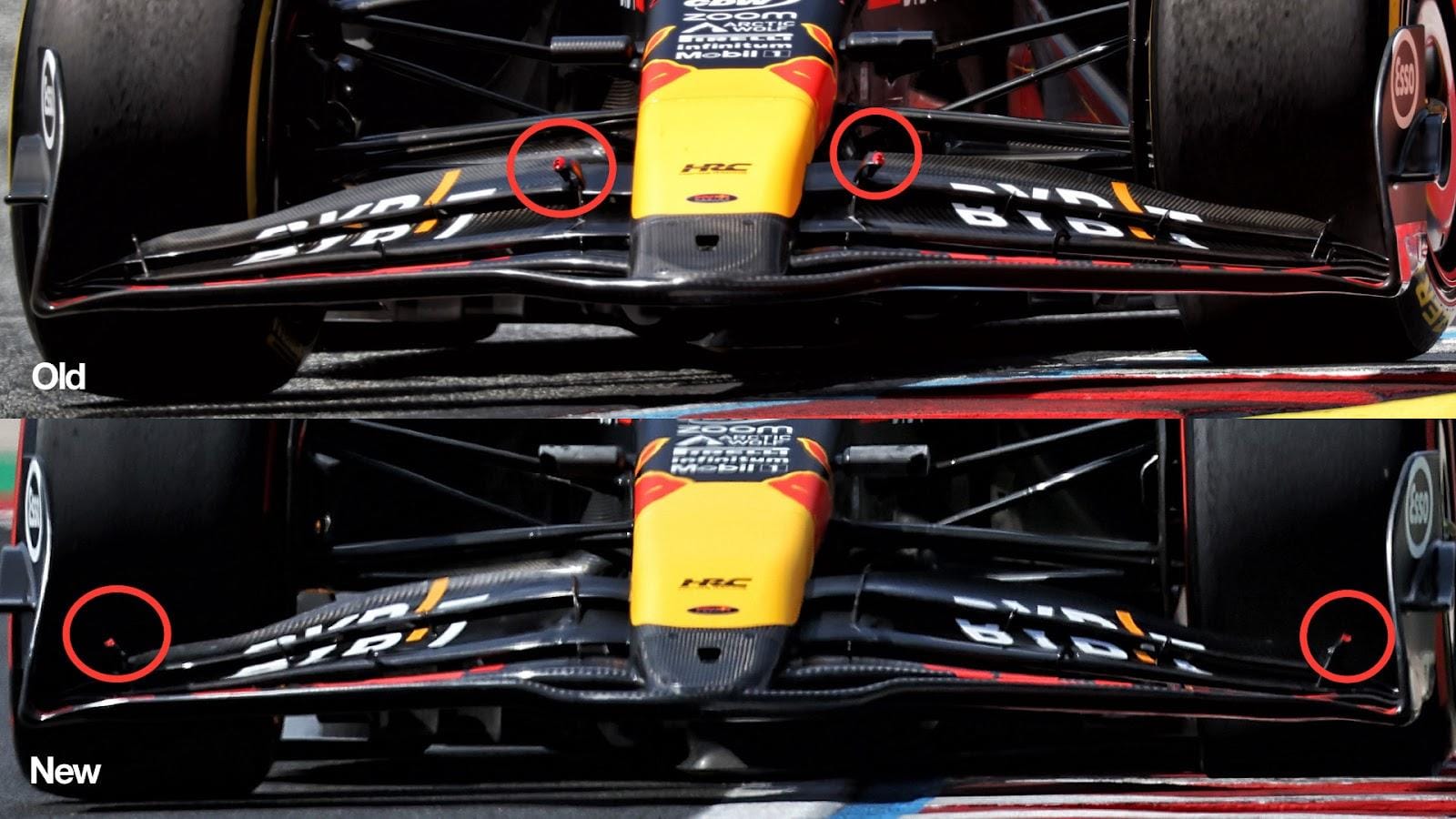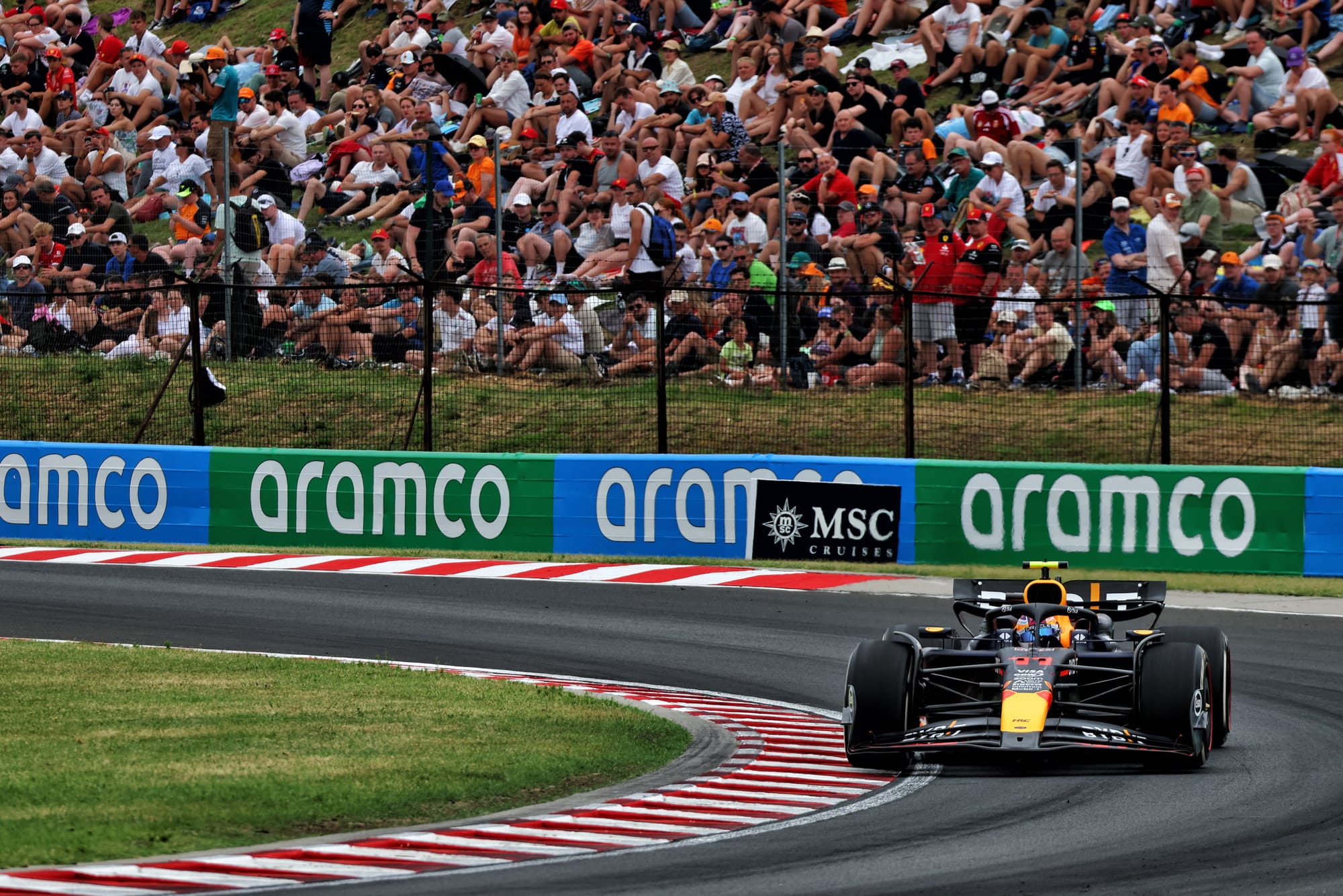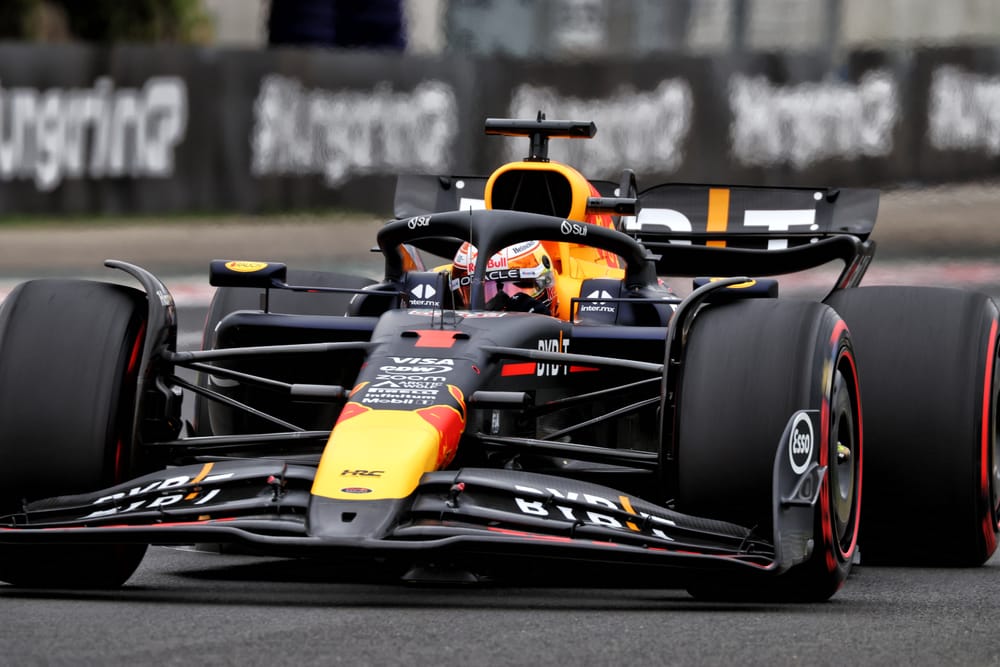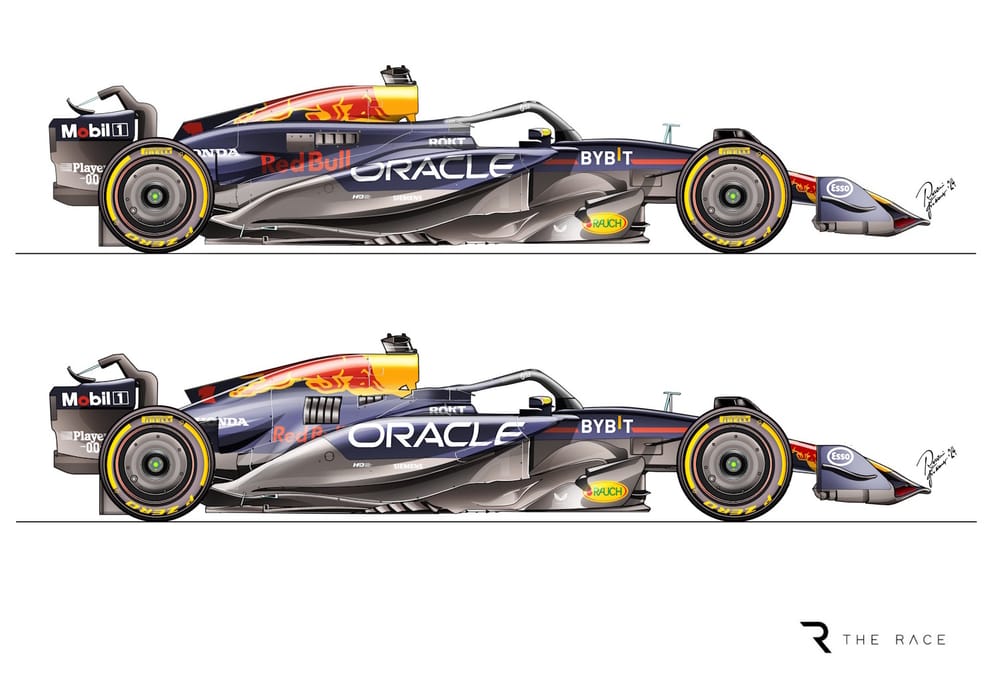With the focus on the bodywork changes further back, the front wing changes made by Red Bull with its Hungarian Grand Prix upgrade are easy to overlook.
But there are some small alterations here that could have a significant benefit to its Formula 1 car.
Since the introduction of Red Bull’s 2024 car I have been wondering why the team didn’t go for the detached front wing main plane central section. It had it on the 2022 and 2023 cars, so what made it change direction for 2024, and again retain it with the new front wing introduced in Hungary?
The airflow on the centreline of the car is critical to the performance of the underfloor and diffuser. It is the flow that goes in between the inner two splitters at the leading edge of the floor that the diffuser has to work with. This means getting the airflow to attach to the underside of the nose is one of the most important requirements.
If the nose runs onto the forward main plane, it is more like a wide nose pushing the airflow around its sides. If this is happening you are trying to pull that flow around the sides of the nose and then under the chassis section at the driver’s feet.
In my opinion, it is very easy to overwork this flow and lose all its energy before it gets into the leading edge of the underfloor.
With this new package, Red Bull has narrowed the tip of the nose to improve this situation. But it’s still nowhere near as much of an improvement as having a slot gap running all the way across.

When Red Bull launched the car, one of the things I thought was a brilliant idea was moving the front wing adjuster inboard (shown in the red ellipse above). This meant that any flexing, which we have been hearing a lot about lately, would be happening outboard.
That would increase outwash and mean that the inboard section of the wing that feeds the underfloor would stay more constant.
However, with this new package Red Bull has moved the adjuster outboard again (again, red ellipse below).

There are two possible reasons for this. One is that flexing the outboard end, which actually produces very little front downforce at speed, was not as big a drop-off in front downforce as required to balance the car, and the car was still too pointy in the fast corners.
This would lead to backing off the front wing angle to get the high speed balance and then the car would have too much understeer in slow and medium speed corners.
We know that Sergio Perez can’t really handle a car that is pointy in high-speed corners, so this modification is logical, at least for him. Verstappen can live with it to a certain extent.

Had the rain not hit in qualifying and resulted in him crashing and being eliminated in Q1, this could have been an area of development that would have helped Perez’s confidence.
The second reason is that the FIA is now studying front wing flex very closely. Perhaps Red Bull needs more of it outboard to be able to balance the car than it can get away with.




